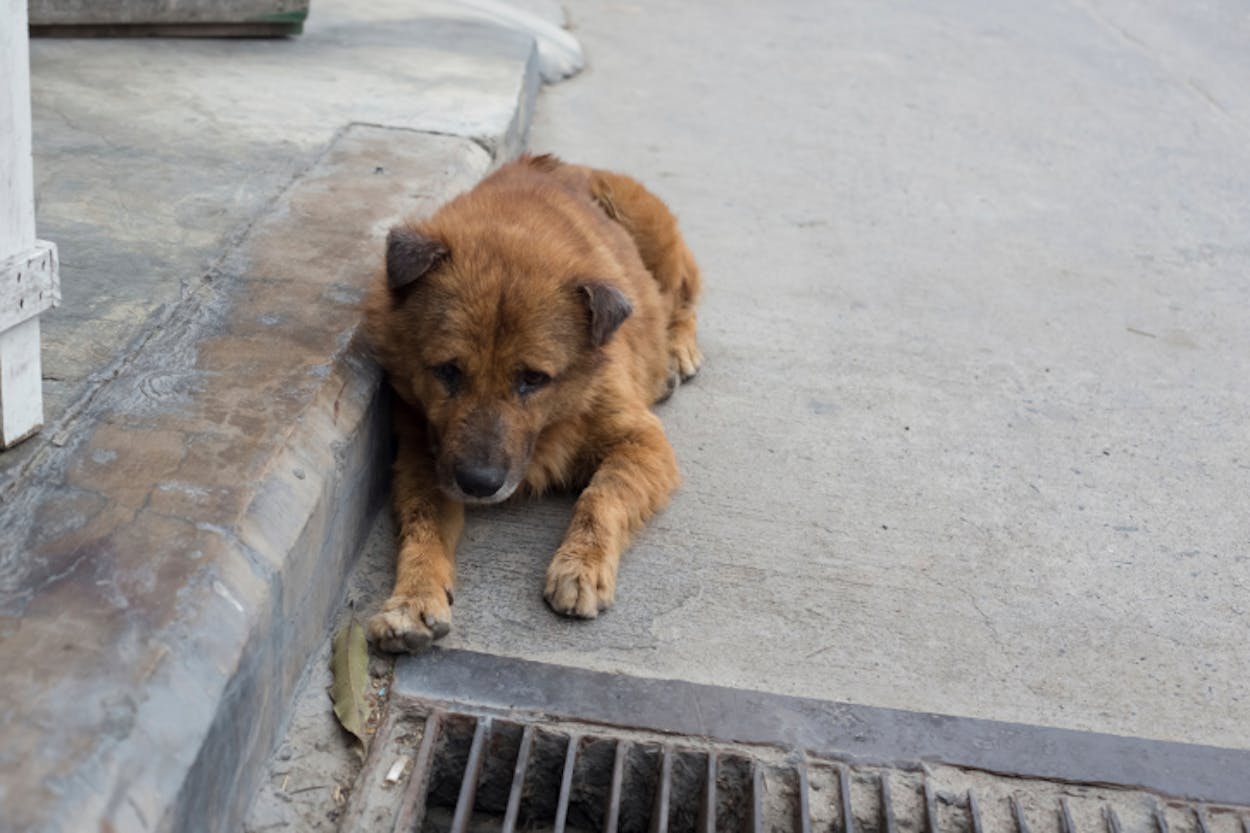A recent months-long investigation that involved Dallas city officials, police, and a local government agency led to multiple criminal charges and a bevy of headlines. No, it wasn’t a drugs or weapons bust; it was the aftermath of a substantial instance of animal cruelty and is a side effect of Dallas’s massive crackdown on the mistreatment of our furry mammalian friends, specifically stray dogs.
The City of Dallas, Dallas Police Department, and Dallas Animal Services conducted an investigation that led to the seizure of more than forty dogs and eight horses from 63-year-old Melinda Vinzant’s home in southwest Dallas. Police also found numerous dead dogs on the property. Vinzant was booked in Dallas County jail and charged on multiple counts of cruelty to livestock animals and cruelty to non-livestock animals. According to her neighbors, Vinzant’s horses were often stuck in excrement and mud. Neighbors had also filed numerous complaints about a stench from the home, the fleas, and the non-stop barking barking. Before the raid, Vinzant had already received more than forty citations for city code violations.
It’s a sad story, tragic no matter how much of an animal lover you are or aren’t. But the arrest indicates that the city is serious about its crackdown on the stray animal problem plaguing South Dallas. The area has historically been notorious for the number of strays that roam the streets. During the 2013-2014 fiscal year, an area in Southeast Dallas had over 3,400 calls to Dallas Animal Services about stray dogs; other nearby zip codes had more than 2,500 and 1,500 calls.
Strays in South Dallas have been something of an important issue to the Dallas Morning News, most notably to editorial writer (and self-proclaimed #catlover, though we can assume that love extends to canines too) Sharon Grigsby. Last year the paper published dozens of reported stories and op-eds on the topic, which include everything from stray dog attacks to calls to action. The paper has also published some wrenching photojournalism, stark images of dead dogs discarded and dumped on the sides of roads and photo essays of loose dogs roaming the city, scenes that look more like a dystopian movie set than the world class image Dallas wants to cultivate.
The full-court, ahem, press appears to have made an impact. In late October 2015, after some false starts, the city launched an initiative to significantly decrease the number of strays roaming five areas with particularly high concentrations, or “hot spots.” Dallas Animal Services also hired 49 people and filled 41 vacancies. The infusion of staffing and the concerted effort toward addressing the problem saw immediate results. In November, Dallas Animal Services picked up or surrendered 55 dogs in one “hot spot” area, a sharp uptick from the months of April to September when the agency picked up just 42. That same month, the agency issued 49 citations, up from a 2.5-average in the months before implementing the changes. In December, DAS had similar success, capturing or releasing 43 dogs and issuing 35 citations in a different high concentration area.
The City of Dallas told the Daily Post that depending on the time of year, Dallas Animal Services generally takes in between 60 to 150 animals a day. “DAS took in 28,741 animals last year; an average of 79 animals a day during FY14-15,” says Richard Hill, the City of Dallas’ senior public information officer.
So, the City of Dallas has been picking up strays or runaways, just not as much in areas where it’s been a rising problem. There are two schools of thought about the root cause. The first is neglect. “Over in the south, dogs are just feral, part of the landscape, and you have to live with them,” a Dallas historian, Donald Payton told the Dallas Morning News. “In the north, a lost dog gets signs on trees and the whole neighborhood gets engaged. In the south, that same dog would not be considered lost. He would be homeless.” This is symptomatic of a larger systemic issue with services in South Dallas, especially when compared to the north side of the city. This inequality has been long documented. The DMN launched a vertical in 2007 about the two different Dallases with the sole purpose of addressing the “longstanding economic and quality-of-life disparities between the northern and southern halves of the city.” Some of those issues include widespread blight, underfunded and low performing schools, and lack of jobs. To his credit, Mayor Mike Rawlings has spearheaded an initiative called “Grow South” that seeks to address these issues.
The second school of thought is more specific to this problem. DAS has been underfunded and understaffed for a long time, and as such has had to prioritize resources towards attacks in progress and injured animals first. As a part of the initiative mentioned earlier, Dallas Animal Services made 27 hires in November (December numbers haven’t been released yet). With any luck, Hill says the hires will also improve DAS’ “live release rate” from 52.2 percent to a goal of ninety percent. It’s an ambitious target, but given the attention that’s been paid to the issue, one that could be achieved.






